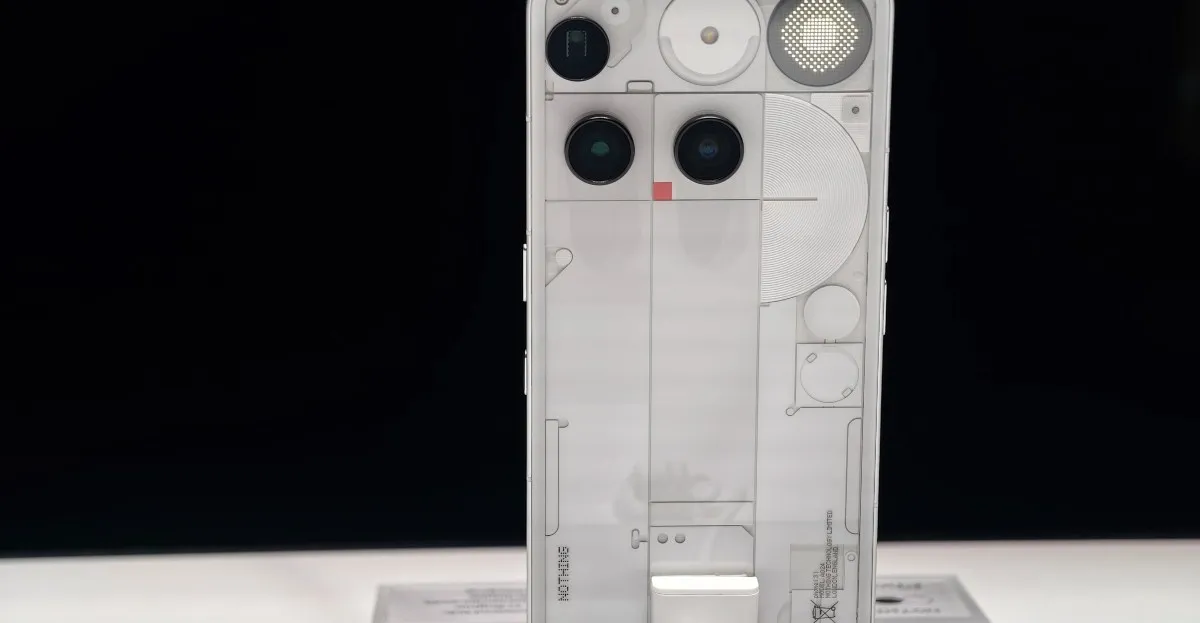
In a recent press event, Carl Pei, founder and CEO of Nothing, unveiled the highly anticipated Nothing Phone 3. He emphasized that the new Glyph interface is far from a gimmick, a statement that sparked curiosity among tech enthusiasts. This latest iteration of the phone introduces engaging features, including a playful game of Spin the Bottle right on the back of the device. While the messaging may seem mixed, Pei assures that the company is committed to delivering a product that stands out in the competitive smartphone market.
The Nothing Phone 3 is being touted as the company’s “first true flagship phone.” With a focus on premium specifications, it boasts a flagship chip, camera, and price to match. Priced at $799, the Phone 3 is positioned to compete directly with other flagship models like the iPhone 16, Galaxy S25, and Pixel 9. This strategic pricing marks a significant shift for Nothing as it moves beyond its mid-range origins.
For the first time, Nothing will launch the Phone 3 in the United States, following their 2023 Phone 2. Pei noted that having a US launch makes sense for their premium phones, aiming to establish a firm foothold in the flagship market. Preorders for the Phone 3 will begin on July 4th, with general availability starting on July 15th through Nothing’s own webstore and Amazon in the US. The phone will be compatible with T-Mobile and AT&T, although it will have limited 5G support for Verizon users.
The Nothing Phone 3 is equipped with the Snapdragon 8S Gen 4 chip, which, while not the most powerful chip on the market, is expected to handle all but the most demanding mobile games, especially with up to 16GB of RAM. The device offers a storage option starting at 256GB, with a 512GB variant available for an additional $100. One of the standout features of the Phone 3 is its state-of-the-art silicon-carbon battery, providing a substantial 5,150mAh capacity, along with rapid 65W wired and 15W wireless charging capabilities.
The Phone 3 features a stunning 6.67-inch OLED screen that is more than twice as bright as its predecessor, the Phone 2. Additionally, it boasts an IP68 water- and dust-resistance rating, marking another first for the company. The device is equipped with four 50-megapixel cameras—three on the rear and one on the front—though concrete assessments of the camera quality will have to wait until further testing. Historically, Nothing’s camera processing has not kept pace with competitors, making this an area to watch closely.
What sets the Phone 3 apart from other flagship smartphones is its innovative Glyph design. Unlike previous models featuring elaborate light strips for notifications, the new design incorporates a small, circular dot matrix LED display positioned on the back. While this may appear less visually striking than earlier designs, Pei argues that it enhances user experience by providing immediate and recognizable notifications through images or emojis linked to specific apps and contacts.
In addition to notifications, the Phone 3 introduces Glyph Toys, which are games designed specifically for the Glyph interface. Launch titles include Spin the Bottle and Rock Paper Scissors, along with practical tools like a stopwatch and battery indicator. Pei envisions that these games can add an element of fun to the smartphone experience, even suggesting unique applications like using Spin the Bottle to decide who pays the dinner bill—an idea that sparked laughter during the keynote but merits further contemplation.
The Phone 3 also reintroduces the Essential Key, a customizable side button that debuted with the Phone 3A and 3A Pro earlier this year. By default, this button launches Essential Space, an AI-driven app that organizes and analyzes screenshots to remind users of important events or travel plans. New functionalities include the ability to transcribe and summarize meeting audio, along with a universal search bar that can quickly locate contacts, photos, and answer basic factual queries.
The launch of the Nothing Phone 3 signifies a bold move into the flagship smartphone market and marks the company’s first effort to penetrate the US market in two years. While the new Glyph design may come across as more conservative compared to previous iterations, it has produced a device that is arguably bolder and more divisive than offerings from major competitors like Samsung and Apple. As Pei emphasizes, this is not just a gimmick; it’s a significant step forward for Nothing in the evolving landscape of premium smartphones.